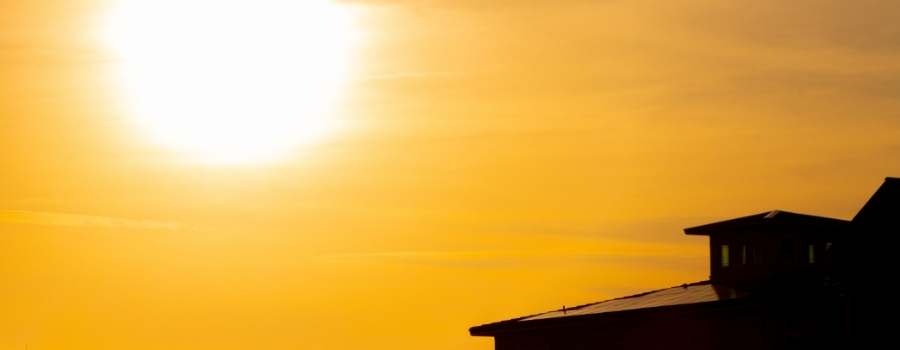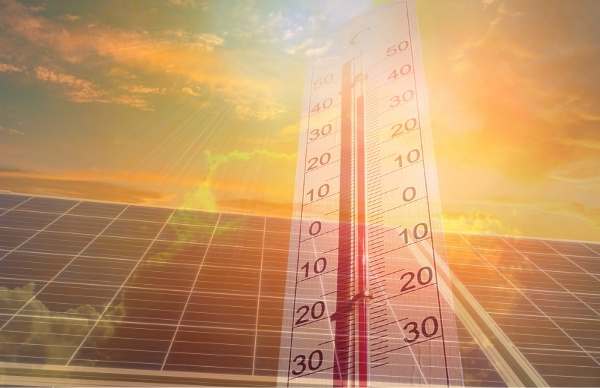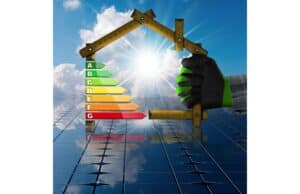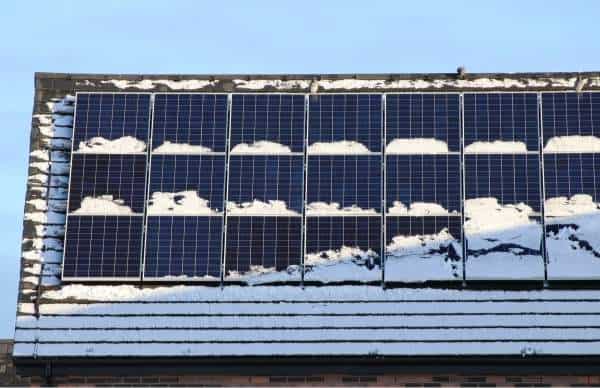
Solar panels are becoming more and more popular each year. As the cost of solar technology decreases, it is becoming more affordable for homeowners to install them on their property.
But one question that many people have is whether or not installing solar panels will cause their home’s temperature to rise.
Do Solar Panels Keep Your House Cooler?
Since solar panels reflect heat produced by the sun, you can expect solar panels to reduce the heat absorption of your roof by up to 38%, resulting in a 5-degree temperature drop versus homes without solar panels.
Of course, different locations will have different results, but in general, solar panels do keep your house cooler.
In some cases, the installation of solar panels can actually increase the surrounding temperature. This is usually only a problem when there isn’t enough ventilation around the panels or if they are installed in an area that gets a lot of direct sunlight.
Do Solar Panels Increase Surrounding Temperature?
In general, solar panels will reflect heat produced by the sun. This can sometimes cause the surrounding temperature to rise, but usually only by a few degrees and only within a short distance of the solar panels.
There are a few things you can do to help prevent this from happening though:
- First, make sure there is plenty of ventilation around your solar panels.
- Second, try to install them in an area that doesn’t get a lot of direct sunlight.
However, if there isn’t enough ventilation around the panels or if they are installed in an area that gets a lot of direct sunlight, they may become hot to the touch.
When more of that energy gets absorbed than usual temperatures start to spike, and that’s always been a big concern of those thinking about going solar…especially since this technology is designed to absorb as much energy from the sun as possible!
Luckily, solar panel tech does not increase surrounding temperatures (not by much, anyway) thanks to the way that this technology absorbs, funnels, and transfers the power that it captures.

Panels Absorb Heat
From a pure thermal standpoint, photovoltaic solar panels are pretty much identical to “every other surface” on the planet.
Like everything else, the energy from the sun is going to be absorbed and reflected in different measures – causing the PV solar panels to heat up or cool down.
At the same time, anywhere between 10% and 15% or so of the energy that hits through solar panels is going to be absorbed directly into the panel technology, converted into usable electricity, and then funneled away into your electrical system.
This means that your panels are actually going to be absorbing heat (energy) more efficiently than most materials, keeping things cooler than they would have been otherwise.
Space Under Panels Is Generally Cooler, Too
The space underneath solar panels will also generally be cooler than it would have been otherwise.
For starters, the area directly underneath the solar panels will be shaded and protected from direct solar energy contact. That alone is going to have a big impact on keeping things nice and cool.
Secondly, panels are designed to be spaced away from other objects (including your roof) to control the temperature as much as possible.
Cool panels are more efficient than hot panels, and properly installed solar panels can actually create a convection system underneath them that helps to transfer heat away from the panels as well.
Standard Roofing Material Is Much Hotter Than Solar Tech
Traditional roofing materials (including asphalt shingles) are going to absorb close to 90% of solar radiation.
That means your roof alone is capturing a tremendous amount of heat and energy from the sun, making everything warmer than it would have been otherwise.
By sticking solar panels up top, you’re able to capture some of that extra energy and turn it into usable electricity – but you’re also able to reflect away energy as well.
Don’t forget, solar panels have reflective properties which traditional roof materials do not.
You might not be reducing household temperatures by more than 10% – 15% by installing solar panels up top, but that might make all the difference!
Does Temperature Affect Solar Panel Performance?

In general, hotter temperatures can reduce solar panel efficiency by about 1/3 of a percent for each degree above 77°F. Solar panels typically operate in cooler, sunny weather but extreme cold can also begin to reduce efficiency.
Like everything else man-made, solar panels have an “optimum operating temperature” that allows them to run as efficiently as possible.
Solar power engineers have found that solar tech…regardless of the type of solar panel being used…generally operates best at 77°F.
Obviously, you’re not going to be able to guarantee 77°F temperatures on your solar panels every single day of the year, but you’ll definitely notice your solar panel system works better when you’re close to that Goldilocks Zone for sure.
Will Solar Panels Get Hot Themselves?
While solar panels don’t produce any heat they will get warmer than traditional roofing materials, but this increase in temperature is nominal and will not affect the performance of your solar panel system.
In fact, if you’re using a good quality solar energy storage solution to capture all that extra energy from your solar panels, you can actually use those hotter temperatures to your advantage!
Solar panels are designed to be spaced away from other objects (including your roof) to control the temperature as much as possible. This is especially important if you live in a hot climate.
It’s important to also remember that solar panels themselves…the cells specifically…are going to be hotter than ambient temperatures most of the time, too. It’s not at all unusual for the temperature of solar cells to be anywhere between 10°F and 20°F…or even more…warmer than ambient temperatures because of this.
This has to do with the fact that solar cells are intentionally made to be a very dark color (generally black, a dark blue or a dark brown, etc.) so that they can absorb as much energy from the sun as possible.
On a related note, did you know solar panels do come in colors other than dark blue or black? For more information on that, check out these articles:
At What Temperature Do Solar Panels Lose Efficiency?
In general, when solar panels start to get up around 80°F they start to lose efficiency and as temperatures get hotter, this decrease of efficiency begins to compound.
This seems a little bit counterintuitive, mostly because the temperature we feel is directly influenced by the amount of solar energy that our solar array is being bombarded with at any one particular point in time.
You’d think that more solar energy…and higher temperatures…would mean more solar energy captured by your solar panel array.
That’s not the way modern solar tech works, though.
When solar energy hits the photovoltaic cells in your solar panel, electrons throughout the silicon structure are fired off into action.
At a certain point, though, too many electrons firing around in the same space can actually do grade efficiency…and that’s what you start to see when temperatures get up around 80°F or higher.
Luckily, this dipping efficiency isn’t all that noticeable until you get to temperatures as high as 149°F or hotter.
Thankfully we don’t see a lot of those temperatures as a general rule, which means you don’t have to worry too much about your solar system efficiency dipping because of hotter temperatures right now.

Cold Temperatures (Generally) Don’t Negatively Impact Solar Tech
On the flip side of things, though, cold temperatures have almost no negative impact on the way that your solar technology functions.
Colder temperatures calm electrons down until they get hit by sunlight (and the energy carried by that sunlight). That means there’s a big difference in the voltage produced by solar panels, in turn creating extra energy.
You do have to worry about things like snow, overcast days, and ice buildup negatively impacting the efficiency of your solar power system, though.
Take care of maintenance during the winter months, though, and you’ll be able to keep your solar power set up running at maximum efficiency!
Final Thoughts
Solar panels are designed to be spaced away from other objects (including your roof) to control the temperature as much as possible. This is especially important if you live in a hot climate.
It’s important to also remember that solar panels themselves…the cells specifically…are going to be hotter than ambient temperatures most of the time, too. This has to do with the fact that solar cells are intentionally made to be a very dark color (generally black, dark blue, dark brown, etc.) so that they can absorb as much energy from the sun as possible.
It’s not at all unusual for the temperature of solar cells to be anywhere between 10°F and 20°F…or even more…warmer than ambient temperatures because of this. This is why even if you get a Goldilocks day that stays at 77°F from sunup to sundown your overall efficiency is lower than when the thermometer read 65°F to 68°F.
